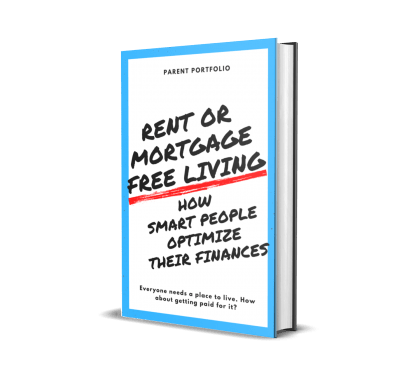17 Survival Strategies for Minimum Wage Workers

If you are making minimum wage, don’t despair. How to survive on minimum wage can be difficult, but it’s not impossible. The key is not only keeping track of your spending and cutting costs where necessary but also creating and sticking to a realistic, doable budget.
If you’re living on minimum wage, learn how you can stretch your dollars and even manage to sock some money away for that rainy day fund. Read on to find out:
• What is considered minimum wage
• How to live on minimum wage
• How to save when you earn minimum wage
What is Considered Minimum Wage?
The federal minimum wage, created by Congress in 1938 under the Fair Labor Standards Act (FLSA), establishes a base hourly rate at which employers are required to pay their employees. The current federal minimum wage is $7.25, and as noted earlier, that’s an amount that’s remained the same since 2009.
Many states, cities, and municipalities have realized the federal minimum wage is extremely low. They have therefore passed their own minimum wage laws, offering a higher amount, generally ranging from about $10 to $16 an hour. In addition, many companies (such as Amazon, Costco, Target, and Walgreens) have also enacted their own higher minimum wage, eclipsing the federal minimum wage.
In situations where an employee is subject to both federal and state minimum wage laws, the worker is entitled to the higher of the two minimum wages. For instance, Georgia’s basic minimum wage is $5.15 per hour, but since the federal rate is higher, employers must pay the federal wage of $7.25.
What about tipped employees, such as waitstaff? According to the U.S. Department of Labor, employers may pay the employee no less than $2.13 an hour in direct wages. There is a condition, though. If that amount plus the tips don’t add up to at least the federal minimum wage, the employer must make up the difference. In a number of states, the direct wage for tipped employees is higher than $2.13 per hour to help ensure a livable wage. Worth noting: When an employee is subject to both the federal and state wage laws, they are also entitled to the provisions providing the greater benefit.
Is Minimum Wage Livable?
The term living wage refers to the amount of earnings a person or family needs to cover basic expenses. These can include groceries, utility bills, housing, healthcare, transportation, and childcare. The goal of paying employees a livable wage is to prevent people from falling into poverty and allow them to have a decent, satisfactory standard of living.
Unfortunately, the cost of living in the U.S. has risen over the decades, especially during recent inflationary times, and the minimum wage has failed to keep up with the prices of goods and services. According to a 2021 report from Drexel University, individuals working full-time at minimum wage cannot afford the above mentioned basic necessities in any location across the country. The bottom line: For most people, earning $7.25 an hour doesn’t cut it as providing a living wage.
For instance, before taxes, a full-time employee working 40 hours a week on federal minimum wage takes home only $15,080 a year, falling $4,640 well below the $19,720 poverty line for a family of two. A full-time worker getting minimum wage with a family of four falls $14,920 below the poverty line of $30,000.
The report also says a true living wage, one that supports a basic standard of living without housing or food insecurity, would fall between $20 and $26 or higher per hour, depending on the state.
Raising the federal minimum wage to $15 an hour has been an ongoing hot-button issue. The Raise the Wage Act of 2021 is a bill that proposes increasing the minimum wage for regular employees over a five-year period. While the bill is currently being debated in Congress, many companies (as noted above) have taken it upon themselves to pay their workers a higher wage.
17 Tips for Living on Minimum Wage
So, how to live on minimum wage? Here are 17 ways that can make it easier to survive on a minimum wage salary and even set aside some money for savings:
1. Evaluate Your Overall Spending
A first step to getting a hold on your finances is to know how much you’re bringing in per month versus how much is going out. One way to do this is to record all of your expenses. Begin tracking your spending for 30 days. Include everything, including the change you put in the tip jar at a coffee shop.
Doing so will give you an overview of exactly where your money is going and help you determine where you may need to make some cuts. Seeing a spending pattern may also pinpoint any causes of overspending, like not being able to say no to a restaurant invite when you really can’t afford it.
2. Create and Stick to a Budget
Having a budget provides you with a structure so you can organize your finances and live better within your means. When you’re not bringing home a lot of bacon, it’s vital to make sure you know exactly where your money is being spent each month. A line-item budget can help you track your spending in various categories and make adjustments as needed.
One common budgeting method to consider is the 50/30/20 rule. With this, you allocate 50% of your income to your needs (essentials), 30% for wants (nonessentials), and the remaining 20% towards savings. This guideline can help you manage your money better.
3. Put Some Money Towards Savings
The thought of saving when you’re barely scraping by can seem impossible. But if you’re making minimum wage, even putting $5, $10, or $20 a paycheck towards savings can add up over time. You might even set up an automatic transfer from your checking account into savings a day or two after every payday. It’s as effortless as automatic bill payments and can help you build up a nest egg.
Doing so can also get you in the habit of saving and even help improve mental health. One University of Arizona study found people who save money report less psychological distress and have improved financial satisfaction.
4. Look Into Government Benefits
Another “how to survive on minimum wage” tip: Millions of low-wage earners in the U.S. qualify for federal and state government assistance benefits. This aid can help lower costs of food, healthcare, housing, and more for those surviving on minimum wage.
Some of the most popular programs include Medicaid and Child’s Health Insurance Program (CHIP), Supplemental Nutrition Assistance Program (SNAP) or food stamps, Temporary Assistance for Needy Families (TANF), and more. To see what benefits you might qualify for, visit benefits.gov .
5. Save on Food
Obviously, minimizing dining out and ordering takeout will lower your food bill. Some other ideas:
• People and families living on minimum wage can qualify for SNAP or food stamps to help offset grocery costs.
• Consider shopping at less expensive supermarkets, using coupons, buying the store or generic brand, and if applicable, ask if the store has a customer club card so you can get additional discounts.
• Buying in bulk and stocking up on frozen foods and pantry staples such as bread, milk, eggs, peanut butter, pasta, beans, rice, tuna, and canned soups can help when money is particularly tight.
• Food banks or pantries can be another resource. You can search for one in your area at FeedingAmerica.org .
6. Find Additional Ways to Increase Your Income
If you are struggling to make ends meet, you might also think about how you could bring in more income.
• This might be the time to look for a higher-paying job or simply ask your boss for a raise.
• Investigate getting a side hustle on your off hours like driving for Uber, Lyft or delivering food for DoorDash, GrubHub, or Instacart. You could also consider house cleaning, babysitting, dog walking, or pet sitting for extra money.
• Have a marketable craft or hobby? Try selling your creations on Etsy or at a craft fair.
• If you have unwanted stuff that others might want, put it up for sale on Facebook Marketplace, eBay, or your community’s neighborhood group. A garage or yard sale can also bring in some bucks if you’ve got enough to peddle.
7. Lower Your Housing Costs
Housing is where Americans spend the largest share of their paycheck, according to the U.S. Bureau of Labor Statistics. With the prices to rent or own a home consistently rising across the country, this can be a major issue for those living on minimum wage.
A 2022 report by the National Low Income Housing Coalition found that the average minimum-wage worker must work 79 hours per week (the same as approximately two full-time jobs) to afford a one-bedroom rental home at the fair market rent.
If you’re paying more than you can afford for housing, there are ways to cut the costs.
• Consider downsizing to a smaller home or apartment, moving to a more affordable area in your town or city, getting a roommate, or living with a friend or family member while you save.
• Look into applying for affordable public housing in your area, specifically established for eligible low-income people. The U.S. Department of Housing and Urban Development (HUD) oversees public housing agencies in your state or city. You can find your local housing authority office at hud.gov or by calling 800-955-2232.
8. Work Towards Reducing Your Debt
When you’re not bringing in a lot of money, it’s easy to accumulate debt, especially by using credit cards to get by till the next paycheck. This can leave you with high credit card bills due at the end of the month and increase the chance of a minimum payment you can’t afford. You can tackle the problem in a few ways:
• Consolidate your debt by rolling multiple debt payments into one.
• Consider a balance transfer onto one credit card with a zero or low-interest promotional rate. These can provide a period of time during which you can pay down debt before the interest rate rises.
• Seek out help from a reputable non-profit organization such as the National Foundation for Credit Counseling (nfcc.org ), a professional credit counselor, or certified financial planner who can help you create a plan to start tackling your debt.
9. Minimize Healthcare Costs
Healthcare can take a big bite out of a tight budget. These moves may help lower those expenses:
• Medicaid and the Children’s Health Insurance Program (CHIP) are among the government programs providing free or low-cost health care to some low-income families and individuals. To determine if you’re eligible, go to Healthcare.gov where you can also fill out an application.
• Work towards saving on prescription drug costs at participating pharmacies with a discount card or coupons offered by companies such as GoodRx, SingleCare, or America’s Pharmacy.
• Try a variety of free things you can do to stay healthier. Take a walk, ride your bike, pick up a basketball game, or do free workout videos on YouTube.
10. Look to Save on Transportation
Owning a car and maintaining it can be costly. Here, some ways to lower expenses:
• Consider the alternatives to car ownership, such as public transportation, carpooling, walking, or riding a bike.
• When you drive, try to limit extraneous trips to reduce mileage and wear and tear on your car.
• Save money on gas by comparison shopping at your local fuel stations.
• See if you can lower your car insurance payment with good driver discounts or by skipping extras that you don’t really need, like car rental coverage or emergency roadside assistance.
11. Make the Most of Tax Breaks
When it comes time to file your taxes, make sure you’re taking advantage of whatever tax credits and deductions are offered for low-to-moderate-wage employees, such as the Earned Income Tax Credit, Child Tax Credit, or the Child and Dependent Care Credit. If you qualify, you can use the credits to help reduce the amount of taxes you owe and possibly increase your refund.
12. Check Your Paycheck Withholding Amount
When you start a new job as a regular employee, your employer will have you fill out a W-4 form to determine how much tax money should be withheld from your pay and sent to the IRS for you. This is determined by what your tax filing status is (single or married, for example) and whether you have any dependents.
If you choose to have too much money taken from each paycheck, yes, you’ll get it back in the form of a tax refund, but it might be more useful to have that extra money during the year. You can change or update the withholding information on your W-4 form with your employer at any time. What’s more, you should do so if you experience any type of personal life change, such as marriage, divorce, or having a child.
13. Mind Your Utility Usage
Americans pay up to $613.00 a month for utility costs, according to a study from Move.org. This can add up to half a minimum wage-earner’s monthly paycheck.
Fortunately, there are many ways to lower your utility bills that can help with the challenge of how to live on minimum wage.
• Switch to using more energy-efficient light bulbs and you can save on average $225 a year, recommends the U.S. Department of Energy.
• Avoid phantom energy usage: Turn off or unplug any appliances not in use, even those sitting idle still drain some energy from the outlet.
• Save up to 10% on heat and cooling costs by setting your thermostat back seven to 10 degrees back from its normal setting for eight hours a day (such as when you are out at work).
• Switching to doing cold water washes can save on gas and electricity needed to heat water.
• If you need new appliances, opt for ENERGY STAR labeled machines that use less water and energy than standard ones.
• Get rid of any extra cable channels you don’t watch or downsize to a more basic plan.
• If you’re having trouble making payments, call your utility companies and see if you can negotiate rates or be put on a financial assistance payment plan.
14. Take advantage of any employer-sponsored benefits
Make sure you use any plans your employer offers, such as health insurance, retirement accounts like a 401(k), daycare services, or paid time off. These things can be priceless to any employee but especially if you’re surviving on minimum-wage.
15. Look for Cheap or No Cost Things to do
Living on a low-income salary doesn’t mean you have to sit home and give up on fun. But instead of pricey entertainment and eating out, consider these ideas.
• Check to see if any museums have a day where admission is free.
• Grab a slice of pizza with a friend for a cheapie lunch.
• Take a walk or bike ride; visit the library to check out free books and DVDs.
• Host a potluck gathering with friends.
16. Check Out Your Local “Buy Nothing” Groups
Neighborhood “buy nothing” groups, where people post things they want to give away, have become popular. These community networks can be a great way to get clothing, food, toys, appliances, and furniture absolutely free.
Not sure where to start? Visit BuyNothingProject.org or search Facebook to see if there’s a buy nothing group near you.
17. Be Kind to Yourself
Living on a minimum wage income can be a constant source of anxiety and stress. But think about thriving rather than just surviving on minimum wage. Be sure to practice self-care. There are lots of low-cost or free ways to reward yourself, from camping out to treating yourself to a fancy coffee to finding free live music in your area.
The Importance of Having a Savings Account
When you’re living paycheck to paycheck, saving money can feel like an impossibility. But opening a high APY savings account is a wise move. It’s a place where your money can securely grow over time, thanks to the interest it earns. It’s also a place that may be less tempting to tap into than your checking account, and it’s less risky than, say, investing in the stock market.
You can save for a specific financial goal, such as moving to a bigger apartment, or let it build as a nest egg for your retirement. Another reason it’s important to have some savings? You need an emergency fund for life’s unexpected and expensive moments, such as having a sick pet, needing a car repair, or suddenly losing your job.
Financial experts generally advise having at least three to six months’ worth of living expenses socked away. This cash can help prevent your using credit cards or money in your checking account slated for bills when an urgent need crops up.
Can You Open a Bank Account While Earning Minimum Wage?
Yes. You don’t have to have a high-paying job in order to open a bank account. Anyone in the U.S. who is 18 years old or older can open a bank account on their own, and that includes people who are unemployed or have no income at all.
It’s important to know that many traditional banks require you to make a minimum deposit when opening a bank account, which can be anywhere between $25 and $100. However, some banks, especially online ones, will allow you to open an account with no minimum balance required.
What to Look for in a Bank on a Minimum Wage Salary
If you earn a minimum wage, you’ll likely want a bank that doesn’t have a lot of hurdles to opening an account or charge a lot of fees. Look for these features:
• No extra fees: Some banks tack on extra fees for different reasons, such as using an ATM not in their network, overdraft fees for having to cover for insufficient funds, or a monthly maintenance or service fee. Look for a bank that doesn’t charge these fees.
• Interest-bearing account: A bank account that allows you to earn money on your deposits can only help your money grow. Many banks don’t pay interest on checking funds, or pay a sliver of a percentage on savings. Shop around for a better annual percentage yield (APY).
• No monthly minimum balance requirements: Many banks charge a monthly fee if you don’t keep a minimum balance in your account. Search for one without any rules on how much money you’re required to have in there.
• Low-to-no minimum deposit requirements: You may find some banks have a minimum amount of money you have to deposit in order to open an account. It could be as low as $10. However, you can also find banks that don’t require any deposit at all to start an account.
Banking with SoFi
People who live on a minimum-wage salary can benefit from creating and sticking to a budget, finding ways to cut costs, knowing about financial assistance programs, and finding a trusted online bank offering zero account fees, no balance or deposit minimums, and no service charges.
Banking with SoFi can help your money grow, whether you’re earning a lot or a little. When you open an online bank account with direct deposit, you’ll earn a competitive APY, have no monthly minimum balance requirements, and pay no account fees. Another plus? Qualifying accounts get paycheck access up to two days early.
FAQ
Is minimum wage a liveable salary?
It can be, depending on where you live, your expenses, and how much of a minimum wage you’re earning. Many states, cities, and even companies offer a higher minimum wage than the federal wage of $7.25, making it easier for people to survive. That said, in some parts of the country, you would have to work almost two full-time minimum wage jobs just to afford a one-bedroom rental.
What are some tips for lowering expenses when earning minimum wage?
Housing, transportation, and food are the biggest expenses for the average American household. Some ways you can lower these costs is downsizing your housing situation or getting a roommate, limiting restaurant meals, cutting grocery costs, and opting for public transportation. In addition, it can be worthwhile to research local and federal programs that can help you lower expenses and get more for your money, from food stamps to Medicaid.
Can you open a bank account when earning minimum wage?
Yes, you can, but it’s wise to shop around for a bank that doesn’t charge any excess fees or require a monthly minimum balance requirement. Also look for ones that pay a competitive APY on your savings and possibly your checking balance as well.
Disclaimers
Financial Tips & Strategies: The tips provided on this website are of a general nature and do not take into account your specific objectives, financial situation, and needs. You should always consider their appropriateness given your own circumstances.
SoFi® Checking and Savings is offered through SoFi Bank, N.A. ©2023 SoFi Bank, N.A. All rights reserved. Member FDIC. Equal Housing Lender.
SoFi members with direct deposit can earn up to 3.75% annual percentage yield (APY) interest on Savings account balances (including Vaults) and up to 2.50% APY on Checking account balances. There is no minimum direct deposit amount required to qualify for these rates. Members without direct deposit will earn 1.20% APY on all account balances in Checking and Savings (including Vaults). Interest rates are variable and subject to change at any time. These rates are current as of 12/16/2022. Additional information can be found at http://www.sofi.com/legal/banking-rate-sheet
Third-Party Brand Mentions: No brands, products, or companies mentioned are affiliated with SoFi, nor do they endorse or sponsor this article. Third-party trademarks referenced herein are property of their respective owners.
External Websites: The information and analysis provided through hyperlinks to third-party websites, while believed to be accurate, cannot be guaranteed by SoFi. Links are provided for informational purposes and should not be viewed as an endorsement.
SOBK0123016
This article is originally on SoFi.






